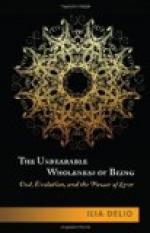Asceticism and libertinism always go hand in hand. They are convertible principles rending their victim. Temptation is the fundamental motif of this condition. The devil was believed to send out his servants to win new souls; monks were visited by demons in the shape of a voluptuous woman, the succubus; Satan himself, or one of his emissaries, disguised as a fashionable gentleman, the incubus, appeared to the nuns. Undoubtedly the dreams of over-excited men and women played a very important part in this connection; many hysterical women felt the devil’s kiss and embrace. All these women were themselves convinced of the truth of their hallucinations and imaginings, and once the belief in witchcraft was firmly established (in the thirteenth century) the obvious atonement for their hysteria was the stake.
The fear of witches, which existed parallel with the love of the Madonna, was typical of the declining Middle Ages. The first Christian centuries knew neither the Lady of Heaven in the later meaning of the word, nor did they know anything of witches. In the reign of Charlemagne the penalty for the belief in witchcraft was death. At all times man has exhibited a tendency to see in woman either a celestial or an infernal being, and nowhere was this tendency more strongly developed than in the soul of the mediaeval dualist: he created the beloved and adored Queen of Heaven, the mediator between God and humanity and, as her counterpart the witch, the despised and dreaded seducer, a being between man and devil. Powerless to effect a reconciliation between spiritual love and sensuous pleasure, he required two distinct female types as personifications of the two directions of his desire; love and the pleasure of the senses could have nothing in common, and once the highest value was realised in the spiritual love of woman, pleasure could not appear otherwise than degraded, sinful and diabolical. In this respect, also, woman submitted without a murmur to the dictates of male will.
Mary and the devil became more and more the real hostile powers of the thirteenth century; the classical time of woman-worship was also the climax of the fear of the devil and witchcraft. The Dominican monks who, above all other orders, contributed to the spread of the cult of Mary, proceeded, soon after the establishment of the Inquisition, against the witches, the enemies of Mary. In the second half of the thirteenth century the persecution of heresy gradually gave way to the persecution of witchcraft.
I will not go into these well-known details, for the psychical position is clear enough: to the man whose heart is filled with the love of good and the spiritual love of woman, sensuousness will appear as dangerous and perilous, and will have at the same time the glamour of the demoniacally-sexual. It is the diabolical element of dualistic consciousness in the sphere of eroticism. Many people of the present day will not be able to understand this feeling, for it pre-supposes a completely inharmonious emotional life.




